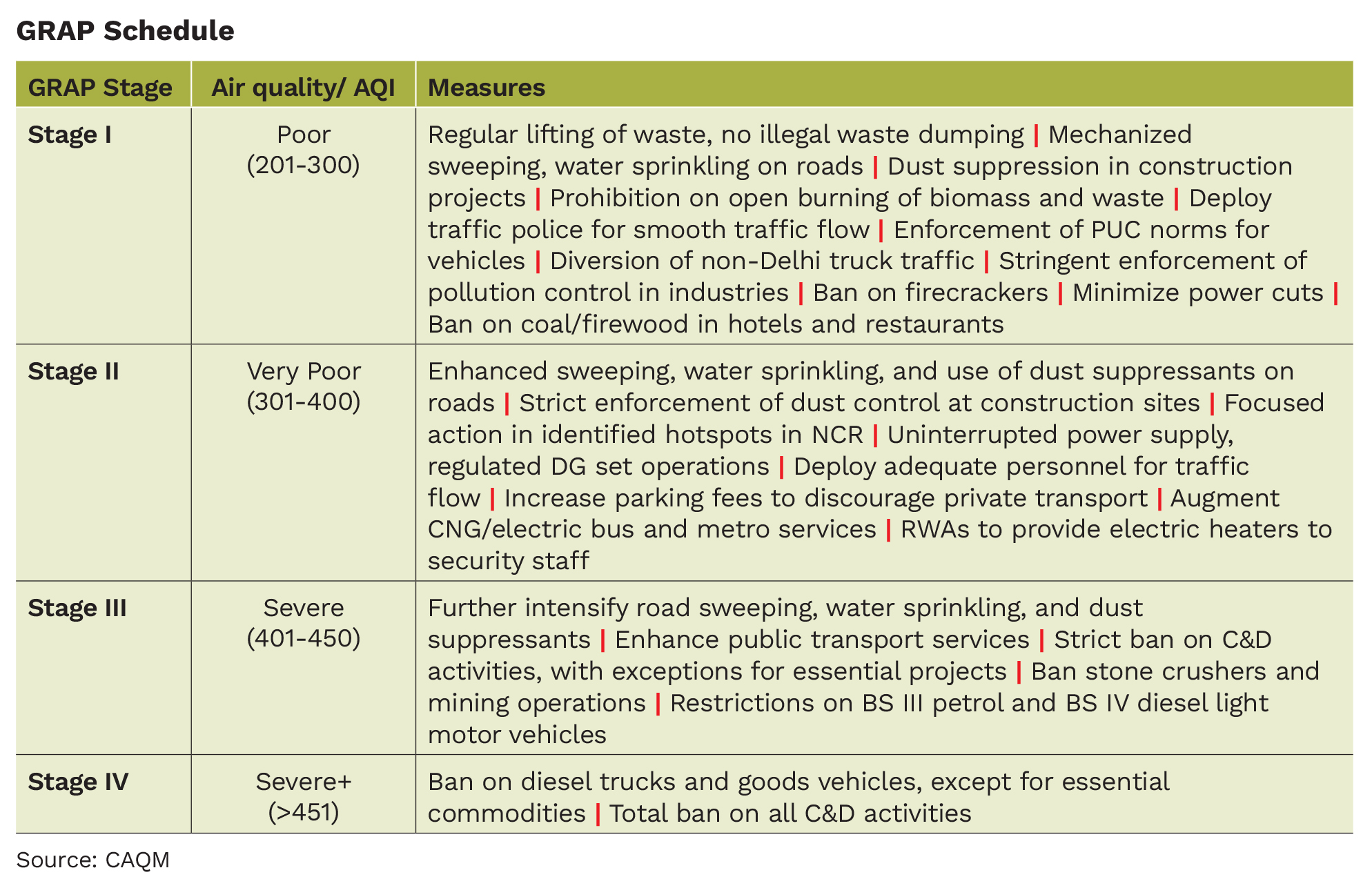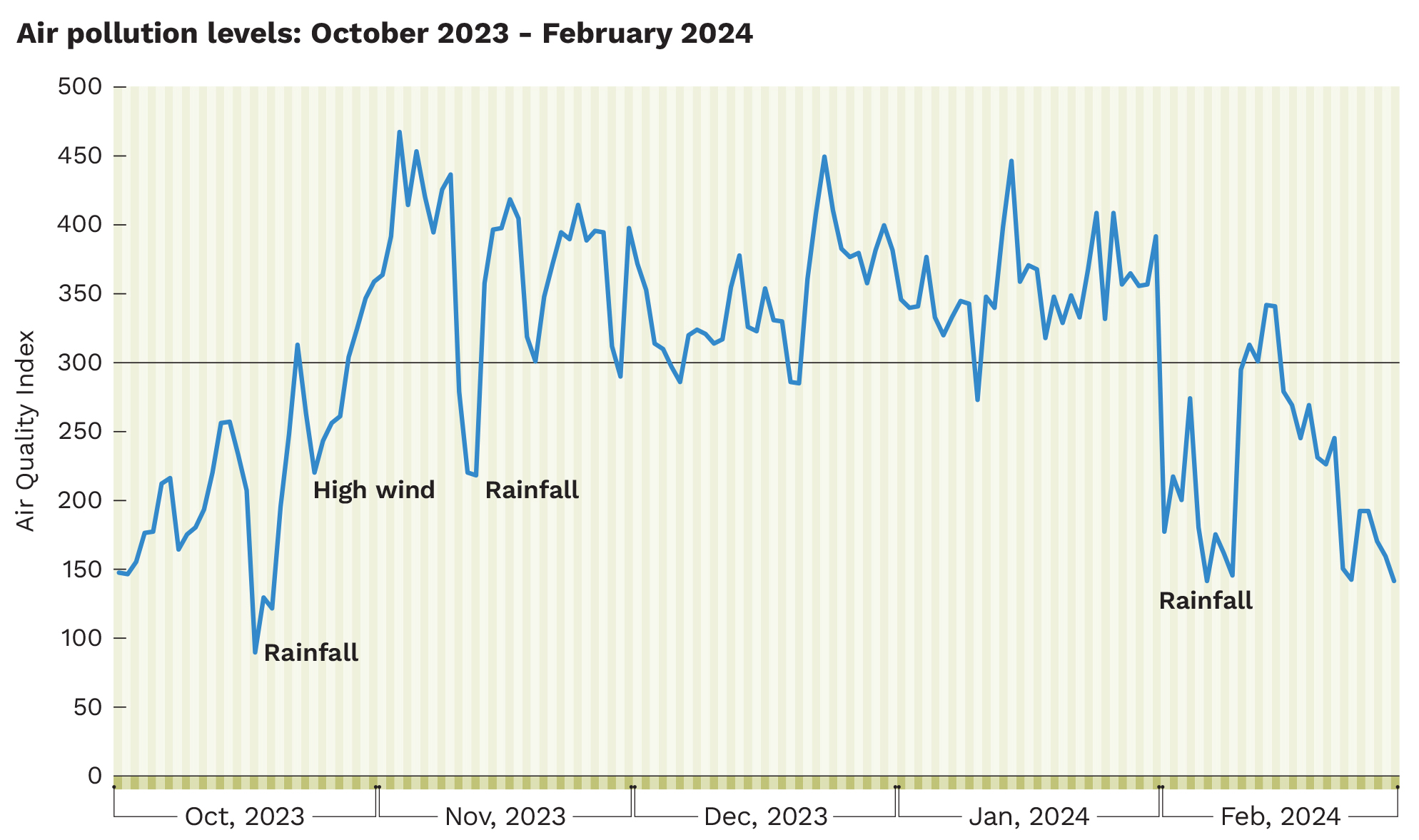Abstract of this article appeared in The Times of India
Delhi’s pollution levels keep rising with rising GRAP restrictions. This plan is only spiking congestion and chaos. Eight years in, it needs replacing with something that actually works.

Even as Delhi was enjoying a rare respite with cleaner air and sunny skies, dropped the news of its being the world’s most polluted capital city. What is needed is to discuss air pollution without falling into the trap of unproductive blame games and futile arguments.
To set the context, the air pollution season of 2023-24, stretching from October 1st to February 29th, was one of the worst in recent memory. It’s average Air Quality Index (AQI) was 304, a notable increase from 280 in 2022-23 and 278 in 2021-22.
Alarmingly, the city witnessed 92 days of ‘very poor’ air quality, compared to 73 in 2022-23 and 67 in 2021-22— nearly 40% increase in the last two years. The question we need to ask is why, despite concerted efforts, the needle on pollution levels is moving in the opposite direction?

Usual Suspects
These columns have previously delved into the primary drivers of our national air quality crisis—extensive use of biomass and coal, along with dust from widespread land degradation. Today, we scrutinize the Graded Response Action Plan (GRAP), a key strategy to mitigate the city’s hazardous pollution levels.
GRAP Ambit
First, let’s understand what GRAP is and whether it even merits being called an “Action Plan”. The GRAP schedule ranges from Stage I to IV and gradually intensifies restrictions on different economic activities. However, as the table below shows, most measures under Stages I to III contain activities a city should do throughout the year, irrespective of air quality. Proper waste management, prohibiting open burning, traffic management, enforcement of pollution laws and dust suppression on roads and construction should be done as routine, not as an emergency response.
The plan reserves its more draconian measures — construction bans, the ban on mining and vehicle restrictions — for its final stages when air quality plunges into severe categories. Yet, the evidence that these interventions bring about significant air quality improvements is scant. Our analysis suggests that reductions in pollution levels are more closely tied to natural phenomena like rainfall or changes in wind speed rather than the direct impact of GRAP’s stringent measures.

Meteorological Miracle
Consider the sudden dip in pollution levels on 17th-20th October, 2023, 10th-12th November, 2023 and 1st-9th February, 2024. They were caused by rainfall. Likewise, on days when AQI was less than 300, the wind speed was generally above 9 km/hour. So, meteorology decides the air quality in the city, not GRAP measures. Yet, we have continued with GRAP for the last eight years without asking whether it is even working.

Chaos and Pollution
The fact is, the GRAP restrictions, apart from hurting lakhs of jobs, especially for low-income families, are likely causing more pollution and chaos. Take, for instance, the chaos at Delhi airport in January 2024.
Minister of Civil Aviation Jyotirao Scindhia blamed the delays and cancellations on the enforcement of GRAP-IV, which stopped the recarpeting of a runway. While one can argue that the Delhi airport could have done the maintenance before winter, the fact is that because of the GRAP IV-induced construction ban, the number of passengers who faced delays was 4.8 lakh in January 2024 compared to 2.4 lakh in January 2023. Is pollution due to the recarpeting of a runway more than the pollution from thousands of waiting and hovering aircraft and traffic chaos at the airport?
Likewise, the restrictions on commercial vehicles, intended to curb pollution, have had the opposite effect, exacerbating congestion and chaos at the city’s borders.
The GRAP restrictions are counterproductive and impose unjustifiable costs on the city. They also harm by giving the sense that something is being done to stop pollution when the opposite is true. Thus, it is time to rethink mechanisms such as GRAP and find real answers for air pollution in the city.
Chandra Bhushan is one of India’s foremost public policy experts and the founder-CEO of International Forum for Environment, Sustainability & Technology (iFOREST).
